Wooden shoes are a Dutch icon like tulips and windmills, but they are more peculiar. You may wonder why the Dutch were so fond of this type of footwear. So, I put on my own wooden shoes to learn more about the Netherlands’ wooden shoes.
The Dutch wore wooden shoes because they were comfortable, durable, cheap, water-resistant, well insulated, and provided good feet protection. That made wooden shoes well suited for farmers and manual laborers, a large part of the population in those days.
Read below to learn why the Dutch loved their comfortable, water-resistant, and protective wooden shoes.
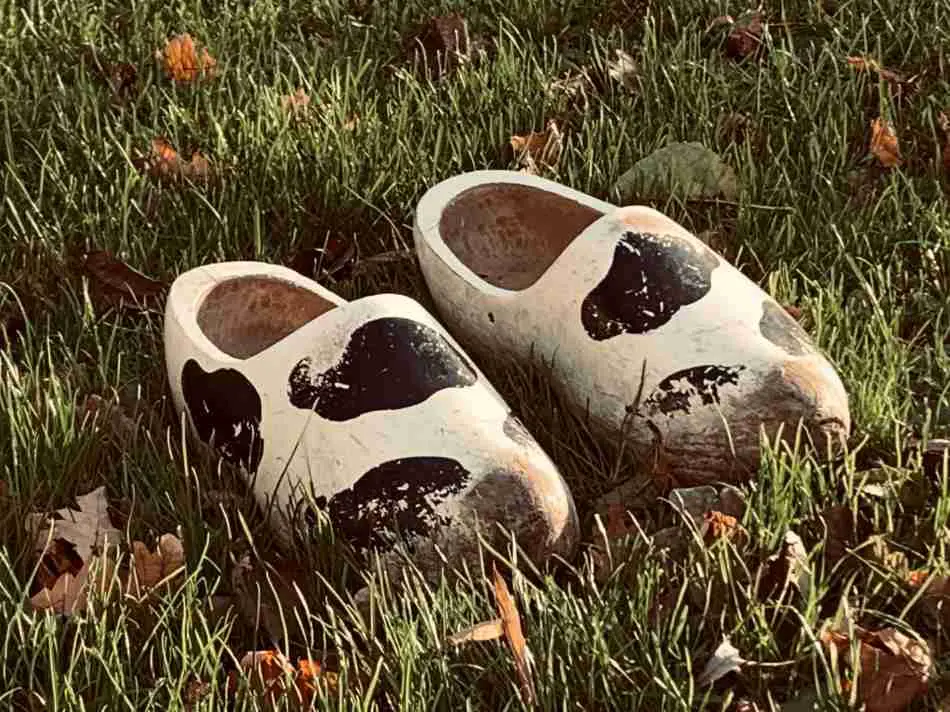
Did The Dutch Invent Wooden Shoes?
You may wonder if the Dutch invented wooden shoes, given that it is such a prominent icon of The Netherlands.
The Dutch did not invent wooden shoes but adapted a sandal used by the Romans. The Dutch used entirely wooden shoes rather than the Roman wooden soles with leather straps. Wooden shoes provided more comfort in their colder climate and protected their feet better against water.
The original idea for a wooden shoe comes from the “calceus shoes” the Romans wore about 2000 years ago. These Roman “calceus shoes” resemble sandals with a wooden sole and leather straps on top.
The northern border of the Roman empire was in The Netherlands between 40-400 AD, and more than enough Roman soldiers walked around on their calceus shoes in The Netherlands to inspire the Dutch to create their own version of wooden shoes.
The first intact, recovered, completely wooden shoes in The Netherlands, dated 1230, were found during an archeological excavation at the Nieuwendijk in Amsterdam. However, completely wooden shoes were most likely produced and worn earlier in The Netherlands.
Are Wooden Shoes Comfortable?
You may think that wooden shoes are uncomfortable, but that is not true.
Wooden shoes are comfortable because they are fitted to the feet. Wooden shoes with leather tops (clogs) are the most comfortable. People with physical jobs, like nurses, wear these clogs for comfort, posture correction, and shock absorption.
Wooden shoes keep your feet warm in cold weather and cool in warm weather. I wear my wooden shoes with socks to protect my feet’ skin and provide more comfort and warmth. You hardly ever see a Dutchman wearing wooden shoes without thick woolen socks.
Wooden shoes are more comfortable to wear on grass or farmland than on paved roads. Wearing thick socks helps a lot to make your wooden shoes more comfortable.
It doesn’t matter if wooden shoes get wet and dirty because your feet will stay dry and warm. You can leave your wooden shoes at the front door and enter the house walking in your socks. Many farmers enjoy their coffee breaks on socks only because their wooden shoes are left outside.
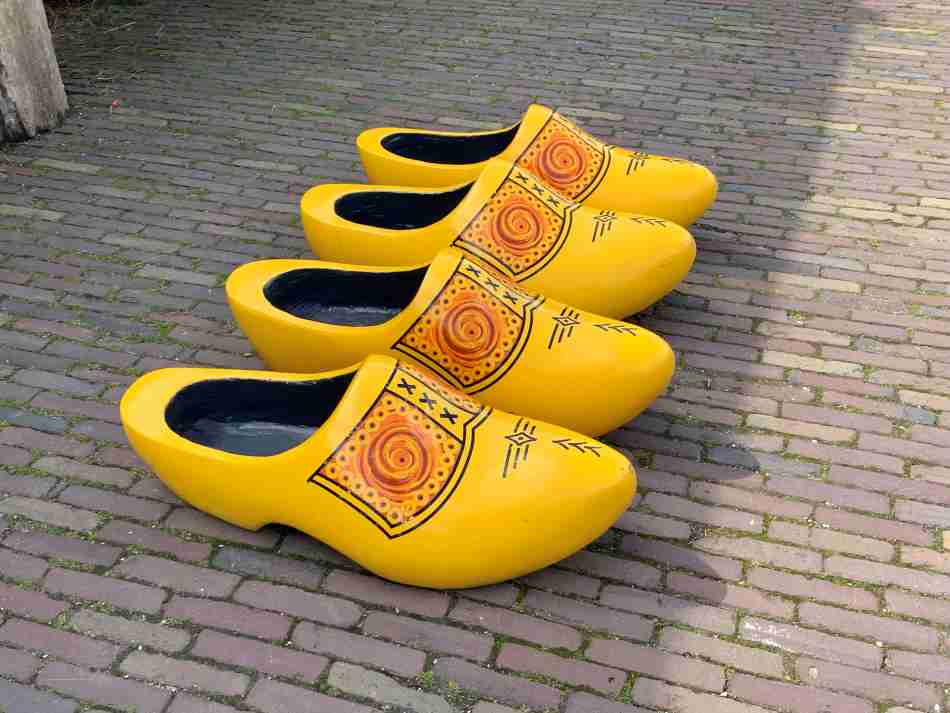
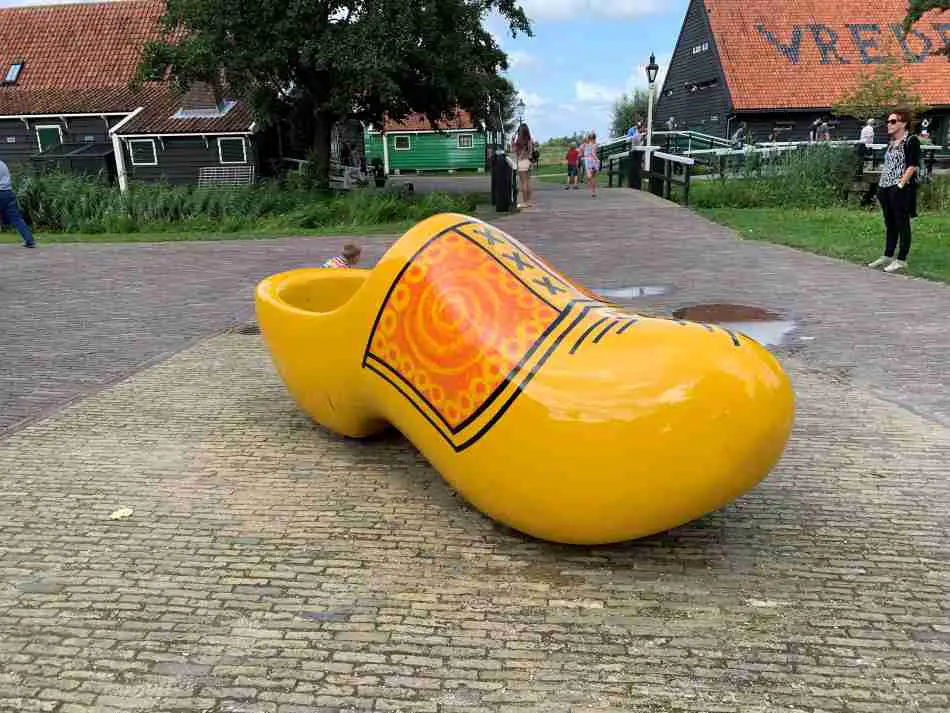
Why Are Wooden Shoes Associated With The Dutch?
Farmers, fishermen, and laborers wore wooden shoes all over Europe. So, why is it then that wooden shoes are associated with the Dutch?
Wooden shoes are associated with the Dutch because Holland has been a trading nation for centuries. The Dutch traveled worldwide to trade goods like wooden shoes. This is why many people worldwide presumed that the wooden shoes came from Holland.
Dutch wooden shoes are known for their characteristic painting and decoration. The traditional Dutch wooden shoe is yellow with decorations, often tulips or windmills.
Do The Dutch Still Wear Wooden Shoes Today?
Wooden shoes are less common than they used to be in The Netherlands. However, you can still see Dutchmen wearing wooden shoes in the countryside.
Many Dutch farmers still wear wooden shoes because they are convenient on wet and soggy farmland. Furthermore, modern Dutch clogs with leather tops are popular among people with physical jobs like nurses because they provide maximum comfort.
It doesn’t matter if wooden shoes get dirty because they are much easier to clean than leather shoes. I am not a farmer and don’t live in the countryside, but I have wooden shoes to work in the garden.
Modern wooden shoes (clogs) with leather tops offer even more flexibility and comfort. These clogs are very comfortable as well as shock-absorbing.
These stylish clogs are popular among people with physical jobs, such as nurses, cooks, and butchers. People in these professions wear them daily for comfort, posture correction, and shock absorption.
How Are Dutch Wooden Shoes Made?
Making wooden shoes is a multi-step sequential process that takes ± 2 weeks and includes the following steps:
- Selecting the wood
- The best wood to make wooden shoes comes from poplars and willows because these wood types become water-resistant when dry
- Sawing the wood
- To prepare pieces of about the length of the wooden shoe
- Water-saturate the wood
- Water-saturated wood is softer and can be easier cleaved and drilled
- Shape the outside of the wooden shoes
- By hand or using a mold when done by machines
- Drill the inside of the wooden shoes
- Hollow out the inside in the shape of a foot
- Dry the wooden shoes
- The wooden shoes now need to dry for ± 2 weeks
- Polish the wooden shoes
- For a smooth surface of the outside and inside of the wooden shoes
- Paint the wooden shoes
- With colors and decorations
Watch the YouTube video below to understand how Dutch wooden shoes are produced. It has already received more than 900,000 views.
It is a fascinating and amusing video looking inside a traditional wooden shoe factory in Marken, The Netherlands, that still uses a steam engine to produce wooden shoes. That is very rare these days and worth having a look at it.
You can buy your own pair of wooden shoes and have them shipped to your home through their website:
A pair of wooden shoes costs about € 20-40, depending on where you buy them and the decorations.
If you want your wooden shoes at bargain prices, you should buy them in a regular garden shop rather than a tourist shop in any city center. Wooden shoes with extensive decorations are more expensive.
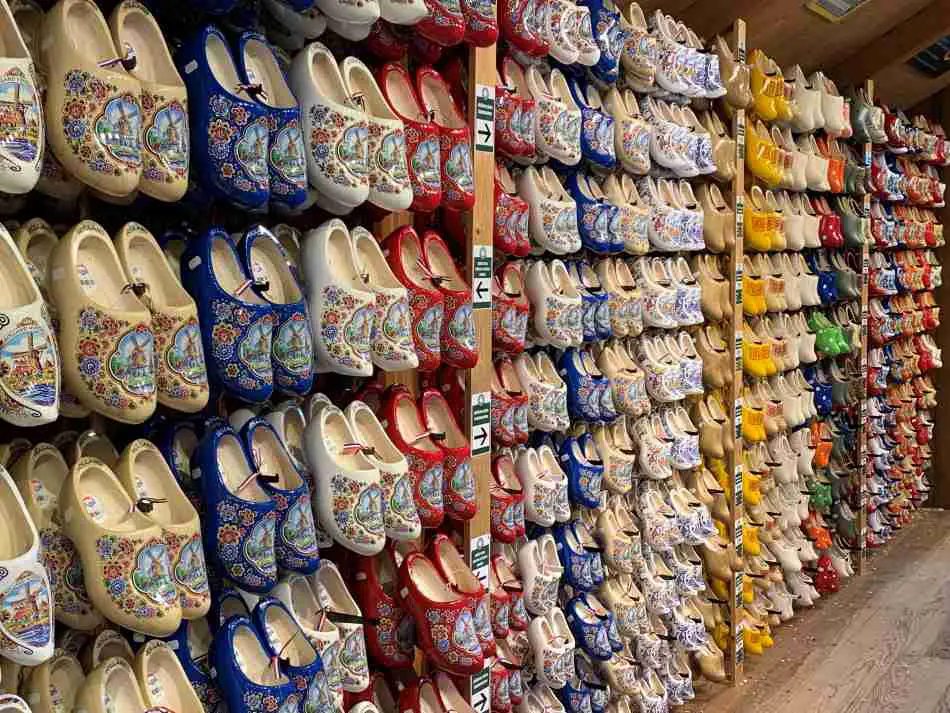
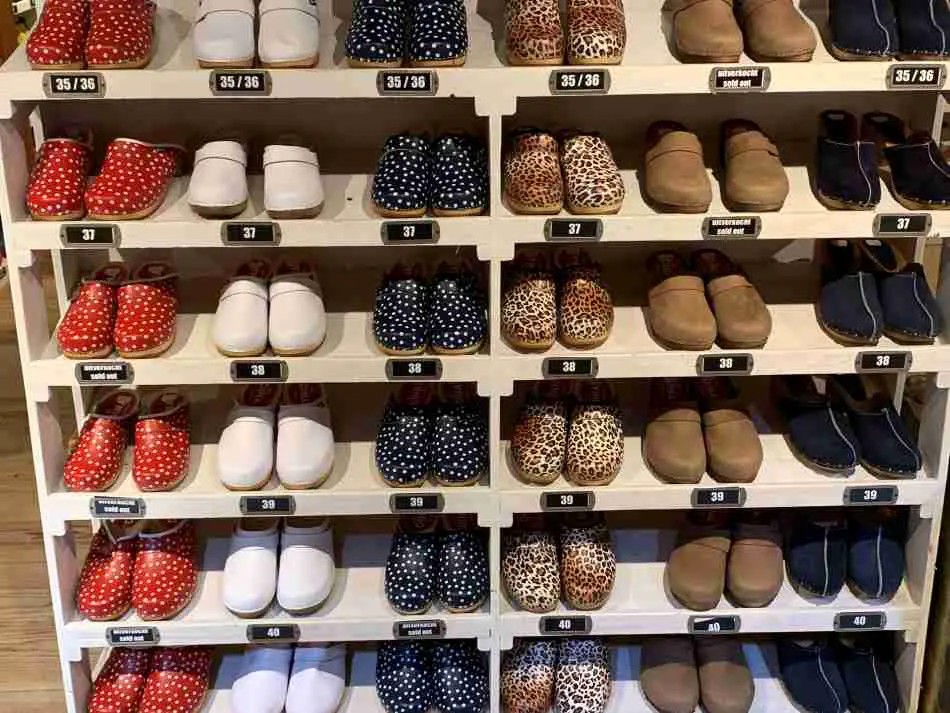
How Should Wooden Shoes Fit?
If you decide to buy wooden shoes for yourself, you must get the correct size for your feet.
- Wear thick socks when you are trying out different sizes of wooden shoes. Thick socks will make walking in wooden shoes much more comfortable when you are not used to them.
- Slide your feet as much forward as possible in the wooden shoes.
- If your index finger fits exactly between the back of your feet and the wooden shoe, you know that you have the correct size of wooden shoes.
- You should be able to easily slip in and out of the wooden shoes and walk comfortably with them if they are the correct size for your feet.
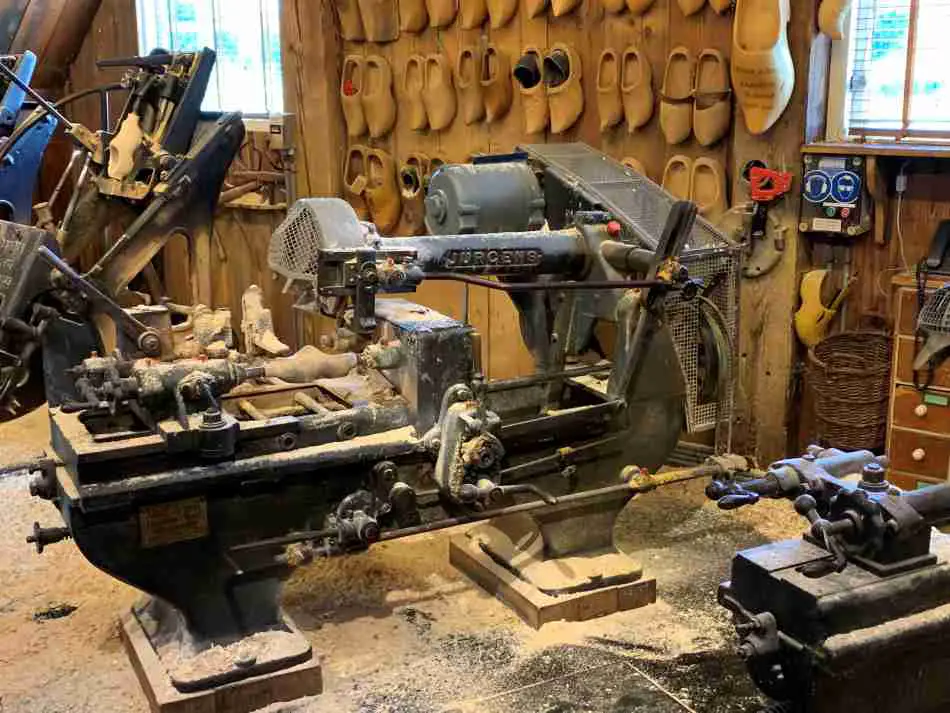
Where Are Dutch Wooden Shoe Factories?
If you want to visit a traditional wooden shoe factory in The Netherlands, there are still about a dozen traditional wooden shoe factories in The Netherlands up and running.
You can find the remaining traditional wooden shoe factories on the map below.
Usually, they have demonstrations and a shop where you can buy a pair of wooden shoes to take home.
Articles About Other Dutch Icons
Check out the articles below If you want to learn more about other Dutch icons like Delft Blue Pottery, Dutch tulips, or windmills.
